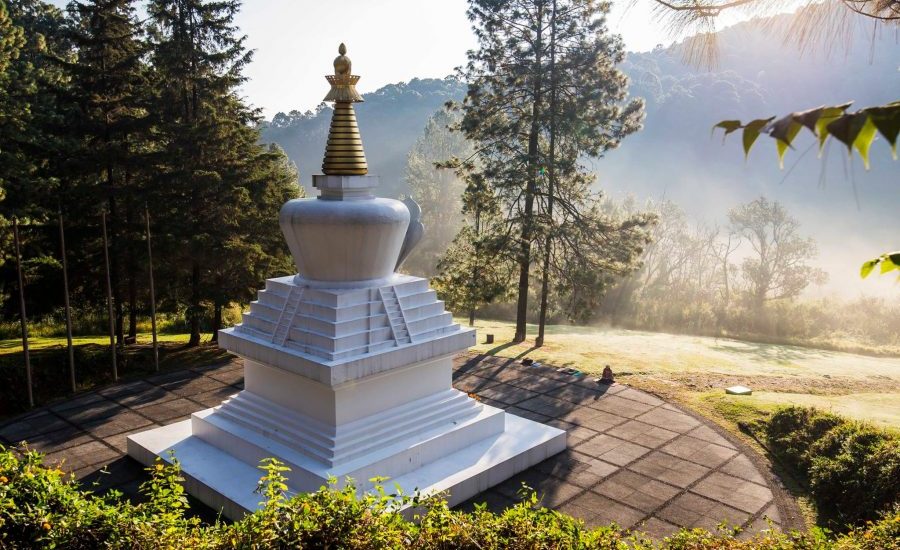In the idyllic town of Valle de Bravo, Mexico, is a stupa under the care of Casa Tíbet México, the remarkable La Gran Stupa Bon para la Paz Mundia. This beautiful religious landmark on the outskirts of Mexico City was founded by Bön teacher Tenzin Wangyal Rinpoche and consecrated in 2010. Despite the relatively marginal presence of Buddhist practitioners in this country, the prominence of the few practicing Buddhists and Dharma teachers here is significant and only growing.
The objective of this post series is to bring greater visibility and awareness to the living tradition of Buddhism in Latin American countries. In the Global South, the two primary regions are South America and Central America. With this objective in mind, BDE’s editor, Daniel Millet, developed a unique special issue, «El budismo en los países de habla hispana». Buddhism in Spanish-speaking countries is a vast and complicated topic, and Mexico is proportionally the largest country by population with the largest percentage of practicing Buddhists.
Daniel also sought out one of the most original and eloquent writers on Mexican Buddhism, Ezer R. May May. May May is perhaps the pioneering social and historical anthropologist of Buddhism in Mexico. His area of specialization centers on the social sciences of religion and beliefs. He has conducted research on Mexican Protestantism and Buddhism (in particular Nichiren Buddhism and the lay Buddhist movement Soka Gakkai). Throughout his academic career, he has published in different national and international academic magazines, and is also a contributor to various encyclopaedias and dictionaries of religion in Latin America (Encyclopedia of Latin American Religions and the Diccionario de las religiones en América Latina).
Due to his Mayan heritage, he has also been involved in indigenous rights activism on behalf of Mayan rights. He is a member of the Red de Investigadores del Fenómeno Religioso en México (RIFREM), the Asociación de Cientistas Sociales de la Religión del Mercosur (ACSRM), and Asociación de Historiadores Latinoamericanos y del Caribe (ADHILAC-Yucatán).
When working on coverage for BDE, Ezer first surveyed the general situation of Buddhism in Mexico in his early pieces Un breve recorrido histórico del Dharma en México and La sangha mexicana en números. He blends statistical analysis and historical research with fieldwork, interviews, and phenomenological analysis. One example is his article Escuchar y ver el zadankai, which looks at the practice of a Soka Gakkai community. He also zoomed in on specific demographics, such as women in the geographical periphery of Mexico.
His article reporting on his findings, Experiencias y pensamientos de mujeres budistas laicas en la periferia geográfica de México, was published in Part One and Part Two. In another two-part piece, he reviewed Levi McLaughlin’s Soka Gakkai’s Human Revolution. The Rise of a Mimetic Nation in Modern Japan (2019) in Part One and Part Two.
Finally, his article ¿Cómo se han estudiado las prácticas budistas en México? looks at how scholars and writers are reflecting on Buddhism in the country, and how the literature of Mexican Buddhism is being shaped in the current landscape.
Ezer R. May May is one of the most erudite and comprehensive writers on BDE. His contribution to the survey of Mexican Buddhism is considerable, and Mexican Buddhism itself is a unique social, religious, and cultural phenomenon that is receiving greater interest, but has yet to be studied thoroughly in academic settings. With Mexicans looking to non-Catholic traditions for alternative pathways to fulfilment and happiness amidst a difficult global environment and domestic issues, Buddhism may well make further inroads in the future.


